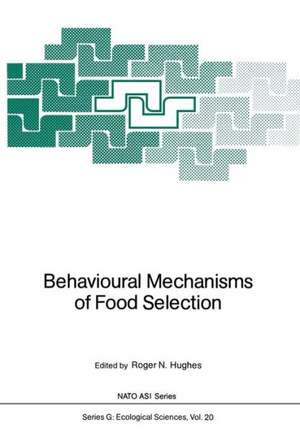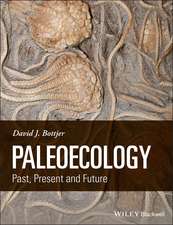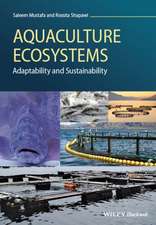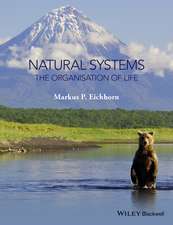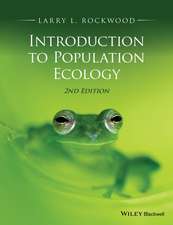Behavioural Mechanisms of Food Selection: Nato ASI Subseries G:, cartea 20
Editat de Roger N. Hughesen Limba Engleză Paperback – 21 dec 2011
Din seria Nato ASI Subseries G:
- 15%
 Preț: 662.62 lei
Preț: 662.62 lei - 18%
 Preț: 979.22 lei
Preț: 979.22 lei - 18%
 Preț: 956.50 lei
Preț: 956.50 lei - 15%
 Preț: 657.08 lei
Preț: 657.08 lei - 18%
 Preț: 949.10 lei
Preț: 949.10 lei - 18%
 Preț: 1235.25 lei
Preț: 1235.25 lei - 18%
 Preț: 967.40 lei
Preț: 967.40 lei - 15%
 Preț: 663.93 lei
Preț: 663.93 lei - 18%
 Preț: 957.44 lei
Preț: 957.44 lei - 15%
 Preț: 642.51 lei
Preț: 642.51 lei - 18%
 Preț: 950.96 lei
Preț: 950.96 lei - 5%
 Preț: 710.60 lei
Preț: 710.60 lei - 5%
 Preț: 1107.06 lei
Preț: 1107.06 lei - 15%
 Preț: 650.69 lei
Preț: 650.69 lei - 18%
 Preț: 966.27 lei
Preț: 966.27 lei - 18%
 Preț: 958.56 lei
Preț: 958.56 lei - 18%
 Preț: 958.56 lei
Preț: 958.56 lei - 18%
 Preț: 962.49 lei
Preț: 962.49 lei - 15%
 Preț: 650.19 lei
Preț: 650.19 lei - 15%
 Preț: 653.33 lei
Preț: 653.33 lei - 18%
 Preț: 960.78 lei
Preț: 960.78 lei - 15%
 Preț: 657.57 lei
Preț: 657.57 lei - 18%
 Preț: 959.50 lei
Preț: 959.50 lei - 15%
 Preț: 640.06 lei
Preț: 640.06 lei - 18%
 Preț: 959.19 lei
Preț: 959.19 lei - 18%
 Preț: 958.38 lei
Preț: 958.38 lei - 15%
 Preț: 647.40 lei
Preț: 647.40 lei - 15%
 Preț: 649.71 lei
Preț: 649.71 lei - 18%
 Preț: 950.03 lei
Preț: 950.03 lei - 15%
 Preț: 655.13 lei
Preț: 655.13 lei - 18%
 Preț: 950.96 lei
Preț: 950.96 lei -
 Preț: 391.02 lei
Preț: 391.02 lei - 5%
 Preț: 1650.15 lei
Preț: 1650.15 lei - 15%
 Preț: 641.03 lei
Preț: 641.03 lei - 18%
 Preț: 1228.96 lei
Preț: 1228.96 lei - 15%
 Preț: 652.49 lei
Preț: 652.49 lei - 15%
 Preț: 670.17 lei
Preț: 670.17 lei - 18%
 Preț: 955.88 lei
Preț: 955.88 lei - 15%
 Preț: 647.59 lei
Preț: 647.59 lei - 18%
 Preț: 957.13 lei
Preț: 957.13 lei
Preț: 979.08 lei
Preț vechi: 1194.01 lei
-18% Nou
Puncte Express: 1469
Preț estimativ în valută:
187.34€ • 196.13$ • 155.02£
187.34€ • 196.13$ • 155.02£
Carte tipărită la comandă
Livrare economică 05-19 aprilie
Preluare comenzi: 021 569.72.76
Specificații
ISBN-13: 9783642751202
ISBN-10: 3642751202
Pagini: 904
Ilustrații: XII, 886 p.
Dimensiuni: 170 x 242 x 47 mm
Greutate: 1.41 kg
Ediția:Softcover reprint of the original 1st ed. 1990
Editura: Springer Berlin, Heidelberg
Colecția Springer
Seria Nato ASI Subseries G:
Locul publicării:Berlin, Heidelberg, Germany
ISBN-10: 3642751202
Pagini: 904
Ilustrații: XII, 886 p.
Dimensiuni: 170 x 242 x 47 mm
Greutate: 1.41 kg
Ediția:Softcover reprint of the original 1st ed. 1990
Editura: Springer Berlin, Heidelberg
Colecția Springer
Seria Nato ASI Subseries G:
Locul publicării:Berlin, Heidelberg, Germany
Public țintă
ResearchCuprins
Theory.- Predator switching and the interpretation of animal choice behaviour: the case for constrained optimization..- Foraging in the context of life-history: general principles and specific models..- The starvation-predation trade-off and some behavioural and ecological consequences..- Timing mechanisms in optimal foraging: some applications of scalar expectancy theory..- On evaluation of foraging strategies through estimates of reproductive success..- Evaluation and Selection of Food Items.- Active diet selection or passive reflection of changing food availability: the underwater foraging behaviour of canvasback ducks..- Territorial salamanders evaluate size and chitinous content of arthropod prey..- Are rules of thumb sufficient for the starling’s choice of food according to gain in energy?.- Prey selection and processing in a stomatopod crustacean..- Constraints and Physiological State.- Time scale and diet choice decisions..- Food requirement and risk-sensitive foraging in shortfall minimizers..- The combined effects of learning and hunger in the feeding behaviour of the fifteen-spined stickleback (Spinachia spinachia)..- The role of behaviour and morphology in the selection of prey by pike..- How important are nutrient constraints in optimal foraging models or are spatial/temporal factors more important?.- Ontogenetic Changes in Food Selection.- Ecological and morphological aspects of changes in food uptake through the ontogeny of Haplochromis piceatus..- Predicting ontogenetic niche shifts in the field: what can be gained by foraging theory?.- Bulk Processors: Mammalian Grazers.- The impact of different growth patterns on the utilization of tree species by a generalist herbivore, the moose Alces alces: implication of optimal foraging theory..- Rules and cuesused by sheep foraging in monocultures..- Constraints on diet selection and foraging behaviour in mammalian herbivores..- Diet selection by generalist herbivores: a test of the linear programming model..- A reply to Hobbs..- Applicability of five diet-selection models to various foraging challenges ruminants encounter..- Bulk Processors: Invertebrate Grazers.- The characteristics of algae in relation to their vulnerability to grazing snails..- Comparative foraging behavior of tropical and boreal sea urchins..- Bulk Processors: Deposit Feeders.- Effects of food value of artificial and natural sediments on functional response and net rate of energy gain by a deposit-feeding polychaete..- Supply-side optimization: maximizing absorptive rates..- Foraging strategy of a deposit feeding crab..- Bulk Processors: Filter Feeders.- Retention efficiency, perceptual bias, and active choice as mechanisms of food selection by suspension-feeding zooplankton..- Concentration-variable interactions between calanoid copepods and particles of different food quality: observations and hypotheses..- Water processing in filter-feeding bivalves..- Behavioural plasticity in the suspension feeding of benthic animals..- Interactions among Foragers: Social Co-Operation.- How trail laying and trail following can solve foraging problems for ant colonies..- Interactions among Foragers: Competition.- Intraspecific kleptoparasitism and foraging efficiency as constraints on food selection by kelp gulls Larus dominicanus..- Foraging in the black-headed gull: compensatory site selection by immatures..- Interactions between Foragers and other Animals: Predation.- Information overload and food selection..- Diet selection under the risk of predation..- Interacting effects of predator and prey behavior in determining diets..- Hunting by the hunted: optimal prey selection by foragers under predation hazard..- Interactions between Foragers and other Animals: Fisheries Management.- On the role of ecological experimentation in resource management: managing fisheries through mechanistic understanding of predator feeding behavior..- The role of the optimal diet predator in multispecies fishery assessment..- Round-Table Discussion (1).- Can there be a general theory of diet selection?.- Round-Table Discussion (2).- The role and importance of optimal foraging theory in ecology.- Participants and Addresses.- Inde.
